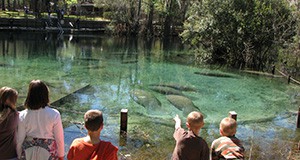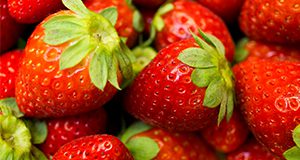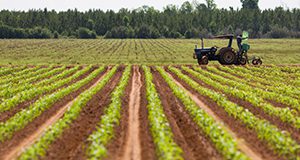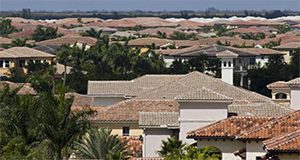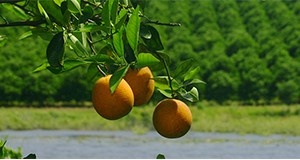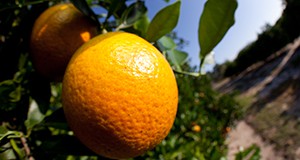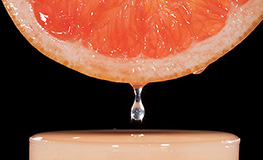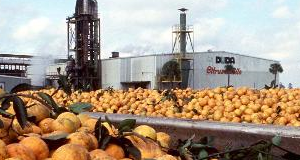Tatiana Borisova y Tara Wade, Departamento de Economia de Alimentos y Recursos, UF/IFAS. This is the Spanish translation of “Florida’s Water Resources,” available in English here.
http://edis.ifas.ufl.edu/fe1044
Tag: Department of Food and Resource Economics
Growing Pomegranates in Florida: Establishment Costs and Production Practices

The study described in this 6-page fact sheet written by Feng Wu, Zhengfei Guan, and Gary Vallad and published by the UF/IFAS Food and Resource Economics Department provides a description of pomegranate production practices and preliminary cost estimates to inform investment and production decisions when growers look to diversify and grow pomegranate as a niche crop.
http://edis.ifas.ufl.edu/fe1024
Import Growth and the Impact on the Florida Strawberry Industry
The United States is the second largest producer of strawberries after China, and Florida, along with California, accounts for about 98% of the total US production. In recent years, the US strawberry industry has become increasingly concerned with competition from Mexico. This 3-page fact sheet written by Zhengfei Guan, Dong Hee Suy, Hayk Khachatryan, and Feng Wu and published by the UF/IFAS Food and Resource Economics Department describes the impact of imported strawberries on the Florida strawberry industry and explains how the industry can adapt to meet the challenge.
http://edis.ifas.ufl.edu/fe1022
Economic Survey of the Environmental Horticulture Industry in Florida in 2015
The characteristics and economic contributions of the environmental horticulture industry in Florida in 2015 were evaluated through mail and internet surveys of industry firms conducted in 2016. The executive summary of the full report, authored by Alan W Hodges, Hayk Khachatryan, Mohammad Rahmani, and Christa D. Court and published by the UF/IFAS Department of Food and Resource Economics, is available here:
http://edis.ifas.ufl.edu/fe1031.
Estimating Benefits of Residential Outdoor Water Conservation: A Step-by-Step Guide
This 9-page fact sheet written by Tatiana Borisova, Laura A. Warner, Jennison Searcy, Anil Kumar Chaudhary, and Michael Dukes and published by the UF Department of Food and Resource Economics in February 2017 was developed to help Extension agents, water-conservation managers, and homeowners estimate the economic benefits of residential outdoor water conservation. It provides guidance for reporting benefits, including lowered utility bills for homeowners, reduced water-delivery costs for utilities, and increased water supply. This publication also offers an example of an impact statement.
http://edis.ifas.ufl.edu/fe1009
Cost of Production for Processed Oranges Grown in Southwest Florida, 2015/16
This 4-page fact sheet written by Ariel Singerman and published by the Department of Food and Resource Economics presents the cost of production per acre for processed oranges in southwest Florida during 2015/16. Thirteen growers participated in the survey and provided annual, per-acre costs by program for a “typical” irrigated, mature grove (10+ years old), including resets. The number of acres managed by their combined operations accounts for approximately 41,000 acres, of an estimated 257,298 acres devoted to oranges in the area, so the sample represents 16% of the acreage devoted to oranges in that region. Typical users of the estimates in this publication include growers, consultants, property appraisers, and researchers.
http://edis.ifas.ufl.edu/fe1007
Cost of Production for Processed Oranges Grown in Central Florida (Ridge), 2015/16
This 4-page fact sheet written by Ariel Singerman and published by the Department of Food and Resource Economics presents the cost of production per acre for processed oranges in central Florida during 2015/16. Five growers participated in the survey and provided annual, per-acre costs by program for a “typical” irrigated, mature grove (10+ years old), including resets. The number of acres managed by their combined operations accounts for approximately 29,000 acres, of an estimated 137,154 acres devoted to oranges in the area, so the sample represents 21% of the acreage devoted to oranges in that region. Typical users of the estimates in this publication include growers, consultants, property appraisers, and researchers.
http://edis.ifas.ufl.edu/fe1006
An Overview of the Grapefruit Market in South Korea
According to the Foreign Agricultural Service of the United States Department of Agriculture, worldwide consumption of fresh grapefruit in 2014/15 increased from 4.2 million to 5.2 million metric tons. China, which is the largest producer of grapefruit, was largely responsible for the increase. In South Korea, however, the state of Florida in the United States has traditionally dominated the grapefruit market. The South Korean grapefruit market has been increasing in recent years and is expected to keep growing. The industry in Florida now faces fierce competition from other suppliers with lower import prices and different harvest seasons. This 5-page fact sheet written by Yan Heng, Hyeyoung Kim, and Lisa House and published by the Food and Resource Economics Department aims to provide an overview of the grapefruit market in South Korea and evaluate the potential of this market for Florida fresh grapefruit producers.
http://edis.ifas.ufl.edu/fe1003
Establishment and Production Costs for Southern Highbush Blueberry Orchards in Florida: Enterprise Budget and Profitability Analysis
The United States is the world’s largest producer of blueberries. Florida’s blueberry production represents a small fraction of total US production, but blueberries are nevertheless an important and valuable crop in the state because Florida growers benefit from the nation’s earliest market window. In fact, the average price for blueberries received by growers in Florida during the last three years was 2.5 times the US average.
This 15-page fact sheet written by Ariel Singerman, Marina Burani-Arouca, Jeffrey G. Williamson, and Gary K. England, and published by the UF Department of Food and Resource Economics provides a summary of the enterprise budget developed for highbush blueberry production in Florida. The budget represents a typical operation and serves as an economic benchmark for growers, providing estimates of expenses and potential estimates of revenue and profit for a blueberry crop to help current and potential blueberry growers make informed decisions about blueberry production.
http://edis.ifas.ufl.edu/fe1002
Harvesting Charges for Florida Citrus: Picking, Roadsiding, and Hauling, 2015/16
A survey of Florida citrus harvesters was conducted in July 2016 to collect data and estimate the harvesting charges to Florida citrus growers during the 2015/16 season. This 5-page fact sheet written by Ariel Singermam, Marina Burani-Arouca, and Stephen H. Futch and published by the UF Department of Food and Resource Economics presents the results of the survey, summarizing the harvesting charges for citrus during the 2015/16 season and documenting the changes in harvesting costs as the impact of HLB increases across the state. The estimates presented provide the basis for computing on-tree prices from delivered-in prices, thus allowing the computation of the change in citrus growers’ economic returns as the industry adapts to remain profitable.
http://edis.ifas.ufl.edu/fe1005
Household Water Usage and Irrigation Practices
Water pollution and drought in the United States have made water scarcity a widespread concern. Currently, residential consumers account for most urban water use, and meaningful programs that lead to water conservation rely on a comprehensive understanding of how consumers use water inside and outside their homes. This 5-page fact sheet written by Hayk Khachatryan, Alicia Rihn, and Michael Dukes and published by the Department of Food and Resource Economics outlines University of Florida researchers’ assessments of current US household indoor and outdoor water use to assist policy makers and researchers with creating incentives for homeowners to conserve water.
http://edis.ifas.ufl.edu/fe996
Cost Estimates of Establishing and Producing Thai Guavas in Florida, 2014
The white Thai guava variety, which is very popular in the Asian market, is beginning to expand into mainstream markets. It has quick, high yields, is easily propagated and is tolerant to moisture stress and soil salinity. But even though it offers favorable returns, there has been little information about the cost of production. This 7-page fact sheet identifies inputs, costs, and yields considered to be typical of a well-managed five-acre Thai guava orchard in south Florida. Written by Stella Garcia, Edward A. Evans, and Jonathan Crane and published by the UF Department of Food and Resource Economics, August 2016.
http://edis.ifas.ufl.edu/fe998
Ocho Pasos para Desarrollar un Plan Simple de Mercadeo

El mercadeo es parte esencial de un negocio. De hecho es el corazón de cualquier negocio que sirva la función vital de convertir actividades de producción en desempeño financiero, asegurando la supervivencia del negocio. El mercadeo es clave, sin importar el tipo de negocio (incluyendo la agricultura).
This 5-page fact sheet provides a rationale for developing a marketing plan, a step-by-step process for creating one, and a marketing plan worksheet. Written by Edward A. Evans and Fredy H. Ballen, and published by the UF Department of Food and Resource Economics. Translated into Spanish November 2015. (Photo credit: Thinkstock)
http://edis.ifas.ufl.edu/fe978
(also available in English as “Eight Steps to Developing a Simple Marketing Plan” at http://edis.ifas.ufl.edu/fe967)
Ejemplo Ilustrativo de los Costos y Rentabilidad de la Produccion de Aguacates en el Estado de la Florida

Los cultivos de árboles frutales son de gran importancia económica en la agricultura del estado de la Florida; en este segmento, la industria del aguacate ocupa el segundo reglón económico tras los cítricos. Aproximadamente el 80 por ciento de la cosecha se vende fuera del estado; por lo tanto, la industria aporta una cantidad considerable de “dólares nuevos” al estado, lo que resulta en un impacto económico total de cerca de $100 millones por año. Este artículo proporciona una estimación de los costos y rendimientos asociados a la producción de aguacate en el Condado de Miami-Dade y un breve análisis de la rentabilidad de la industria.
Written by Edward A. Evans and Ingrid Bernal Lozano, published by the UF Department of Food and Resource Economics in December 2014, and translated into Spanish in November 2015. The English version, titled Sample “Avocado Production Costs and Profitability Analysis for Florida,” is available at http://edis.ifas.ufl.edu/fe837. (UF/IFAS Photo by Tyler Jones).
http://edis.ifas.ufl.edu/fe970
